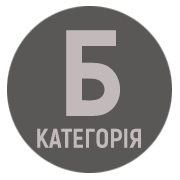Formation of professionally oriented competence of students in the context of modern approaches to teaching a foreign language
DOI:
https://doi.org/10.32782/2617-3921.2022.21-22.324-331Keywords:
professional communication, communicative competence, professional communication, contextual approach, interactive learning, professionally integratedAbstract
The article examines the problem of development of professionally oriented competence of students when mastering of the “Foreign Language” course in the non-linguistic higher education institutions. It has been noted that modern standards of higher education require the use of a professionally oriented approach to teaching academic disciplines including the “Foreign Language” courses. The foreign language education of a future specialist should have at most pragmatic or professional and practical approach and be provided with an appropriate educational and methodological complex as well as defined forms of educational activity which involves the creation of modern programmes for the foreign language course and the effective forms and methods of their implementation. This process should take place purposefully and gradually from the first years of a student’s studies at a higher education institution and be closely related to the content of professional disciplines. It was determined that the application of a professionally oriented approach in the educational process requires certain programmatic changes in the goals and objectives of a specialist education. The aim of specialist training according to modern standards is primarily connected with the formation of foreign language communicative competence in the areas of situational and professional communication which involves the acquisition of such practical skills and abilities that allow to use a foreign language in various types of language and speech activities (speaking, listening, reading and writing). Accordingly, the method of teaching a foreign language should be based on a balanced combination of theory and practice as well as the use of traditional and innovative teaching methods. It was found out that contextual, communicative and interactive approaches are the most effective and appropriate to the specifics of professionally oriented education. The combination of these methods allows to form professionally oriented competencies by involving students in the active educational and cognitive activities. As a result of the conducted research it has been proved that when teaching a foreign language to students of higher education institutions just the quasi-professional (simulated) forms of language learning are the most effective as they provide an opportunity not only to acquire relevant foreign language knowledge and skills, but also to practice certain models of future professional activity.
References
Про вищу освіту : Закон України від 1 липня 2014 р. № 1556-VII / Верховна Рада України. URL: http://zakon2.rada.gov.ua/laws/show/1556-18.
Барабанова Г. Методика навчання професійно-орієнтованого читання в немовному ВНЗ. Київ, 2005. 315 с.
Бойчевська І. Особливості вивчення іноземних мов у немовних навчальних закладах України. Збірник наукових праць Уманського державного педагогічного університету імені Павла Тичини. Умань : ФОП Жовтий О.О., 2015. Вип. 1. С. 44–55.
Дроздова І. Професійний дискурс і мовна особистість студента ВНЗ нефілологічного профілю. Вісник Львівського університету. Серія «Філологія». 2010. Вип. 50. С. 212–221.
Загальноєвропейські Рекомендації з мовної освіти: вивчення, викладання, оцінювання / наук. ред. укр. видання С. Ніколаєва. Київ : Ленвіт, 2003. 273 с.
Мельник А. Контекстне навчання у процесі професійного іншомовного спілкування студентів немовних спеціальностей. Витоки педагогічної майстерності. 2012. Вип. 10. С. 191–196.
Пометун О., Пироженко Л. Інтерактивні технології навчання: теорія, практика, досвід. Київ : АПН, 2004. 135 с.
Тарнопольський О. Аспектний підхід до навчання англійської мови для спеціальних цілей у немовних ВНЗ. Харківського національного університету імені В.Н. Каразіна. 2011. Вип. 18. С. 231–239.



